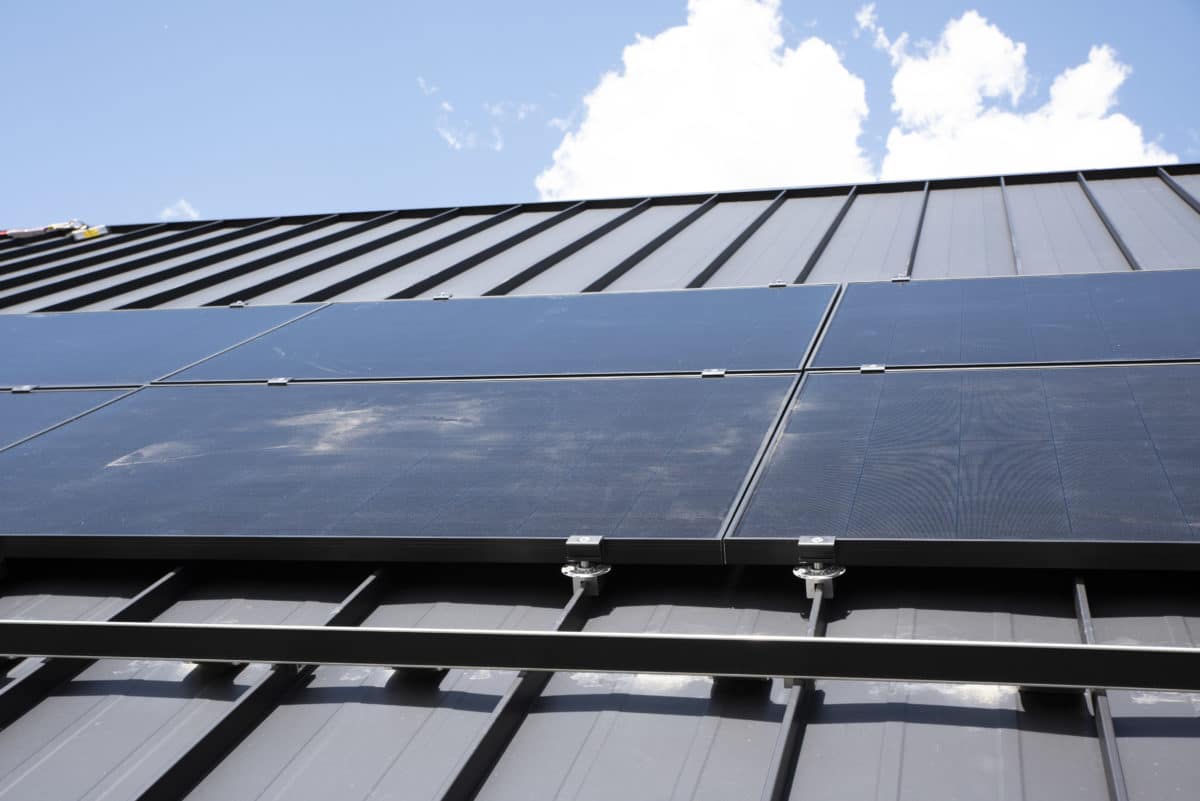S-5!, a manufacturer of metal roof attachment solutions with non-penetrative solutions for attaching solar systems to metal roofs, has joined with members of the Metal Construction Association (MCA), an organization of manufacturers and suppliers looking to promote the use of metal in construction, to release a three-part series of white papers examining the relationship between solar and metal roofs.
The papers, which feature contributions from MCA members and S-5! staff, are all available through MCA’s Metal University online learning service, and part one focuses on solar and roof service life compatibility, a topic that the authors perceive to be commonly-overlooked.
The paper begins by outlining the idea that a rooftop solar system and the roof housing it are inextricably codependent and must be regarded as a single asset. Because of this codependency, the authors lay out that consideration must be given to the durability, longevity and service-life compatibility aspects of the roof to the PV system, as oversight of this relationship can compromise the PV value proposition and grossly diminish the financial return of the system.
What makes the relationship particularly interested is that, with the exception of more specialized and expensive alternatives, metal is the only roof material type that will match or outlive the expected 30-year service lifetime of a solar array. Most metal roofs have a 40-year warranty, and a prior MCA study found that metal roofs can achieve a 70-year lifetime in most non-coastal US environments. This helps to mitigate the higher initial cost that metal roofs present over alternatives, since the PV system will have to be removed and reinstalled entirely once, or multiple times over its lifespan, depending on the age of the roof when solar is installed.
Solar installation costs on metal roofs are typically lower than other roof types, even though they require the use of specialized mounting and fastening equipment that doesn’t penetrate the roof. The authors also outline that installation times on metal roofs are generally shorter, and the whole process can improve financial returns on a solar system by 10-15%.
The authors present metal roofs and PV systems in a similar light, as both assets present a high initial cost, long expected service life, and economically prudent payback. Payback presents itself in the form of net-metering reimbursement and bill savings for solar systems, and as lower lifetime maintenance and replacement costs for metal roofs.
The cost of roof replacement includes the labor and materials cost of the new roof, the labor costs of dismantling and reinstalling the solar PV array, the cost of lost electricity production while the system is down, and the replacement of wiring and any damaged components during the process, which is not a guaranteed cost but is a possibility.
The authors claim that aggregated sum of those costs can approach the original cost of the solar system, and installing a new roof on roof types other than metal before solar is mounted, even if the existing roof is only at 50% or less of its useful life, is often recommended. Since this same recommendation would only apply to metal roofs already 10-30 years old, depending on if the customer is focused on roof warranty or total expected life, the study presents maintenance and replacements costs as the greatest lifecycle benefit for installing solar on metal roofs.
When taking a look at the full financial value, the report states that the solar system and the roof should be considered as a single asset. Typical financial analysis offered at the point of sale for a solar system presumes the roof will last for the entire life expectancy of the solar system, and the commonly-presented assessment that a system will become cash-positive within the first seven years of operation is founded on this presumption. So are the promises that a system will deliver rates of return in the range of 15-40% over a 30-year period.
In the next two installments of the comparison series, S-5! and MCA analyze the common types of PV mounting systems for metal roofs, with a look at associated risks and pros/cons of each, and the critical technical factors for mounting solar PV systems specific on metal roofs.
This content is protected by copyright and may not be reused. If you want to cooperate with us and would like to reuse some of our content, please contact: editors@pv-magazine.com.









By submitting this form you agree to pv magazine using your data for the purposes of publishing your comment.
Your personal data will only be disclosed or otherwise transmitted to third parties for the purposes of spam filtering or if this is necessary for technical maintenance of the website. Any other transfer to third parties will not take place unless this is justified on the basis of applicable data protection regulations or if pv magazine is legally obliged to do so.
You may revoke this consent at any time with effect for the future, in which case your personal data will be deleted immediately. Otherwise, your data will be deleted if pv magazine has processed your request or the purpose of data storage is fulfilled.
Further information on data privacy can be found in our Data Protection Policy.